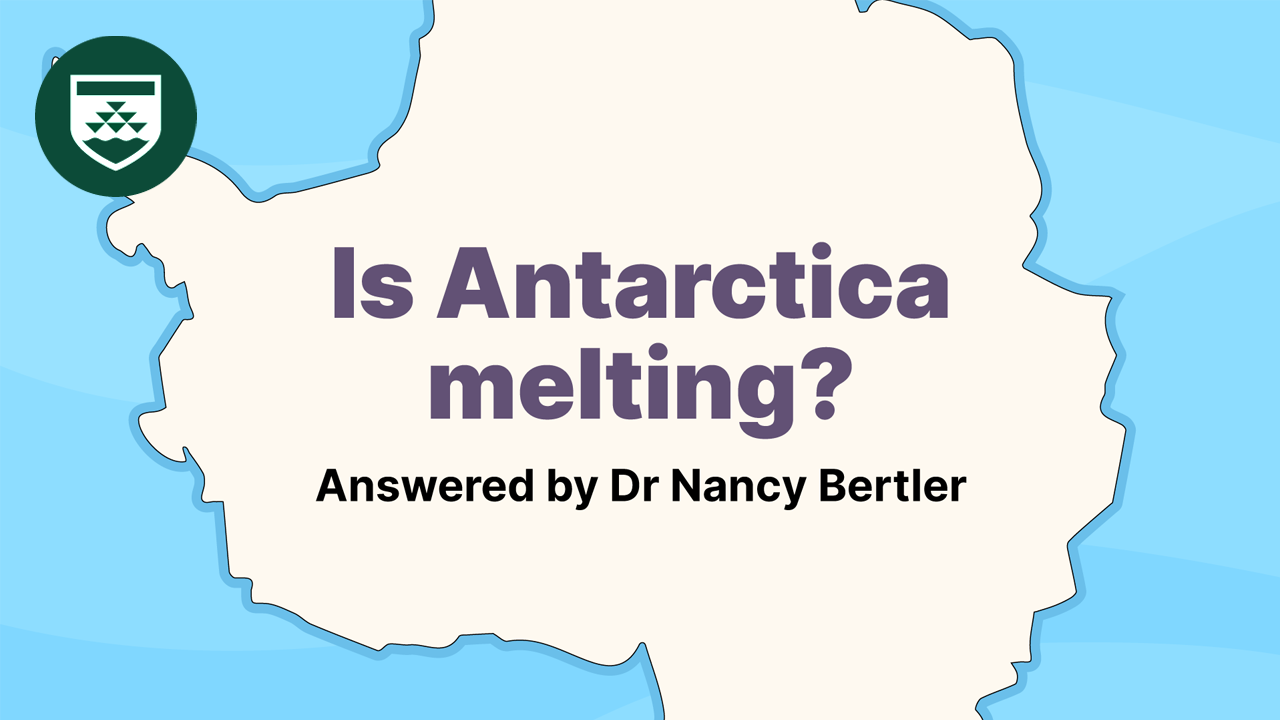What is climate change?
Dr Kyle Clem from Te Kura Tātai Aro Whenua—School of Geography, Environment and Earth Sciences answers:
"One of the most useful parameters we use to understand the global climate is the global average temperature, and there’s only two things that cause changes in the global average temperature, and that’s the brightness of the sun and the composition of gases in our atmosphere.
"Over the past couple hundred years, Earth’s global average temperature has been warming but we have not been seeing an increase in energy from the sun, and this points to changes in the composition of gases in our atmosphere.
"A very, very small percentage of Earth’s atmosphere is comprised of potent gases called greenhouse gases. Now as Earth’s average temperature has warmed over the past couple hundred years, we’ve also seen an increase in these greenhouse gases such as carbon dioxide and methane, and the amount of added heat to Earth’s climate system from this increase in greenhouse gases is consistent with the warming that we’ve seen in Earth’s climate.
"So, we know that we’re not getting more energy from the sun, and the concentration of greenhouse gases are increasing, so the last remaining question is where are these greenhouse gases coming from? While we’ve seen an increase in carbon dioxide, we’ve also seen a steady decline in oxygen in the atmosphere. That tells us that we are burning carbon-rich substances which takes in oxygen. The carbon in the atmosphere that’s increasing is non-radioactive which also tells us that it’s been stored away underground away from the sun for millions of years, and therefore recent climate change is actually caused by human activity—and that’s called anthropogenic climate change."
Want to learn more?
Ask us
Got another question you'd like to ask a researcher? Send us an email and find out what our experts think!
Check out our resources
If you’re a school student or teacher, you can learn more about our science research with our primary and secondary school resources.
Dig deeper
Do you want to stand up for Aotearoa’s climate future? Study with us.
Check out some of the other videos in the series

Is Antarctica melting?
Dr Nancy Bertler from Te Puna Pātiotio—Antarctic Research Centre explains how Antarctica is responding to climate change.
How long ago was the Big Bang?
Dr Stephen Curran from Te Wānanga Matū—School of Chemical and Physical Sciences ventures through time and space to explain the Big Bang.

Why do people believe in conspiracy theories?
Professor Marc Wilson from Te Kura Mātai Hinengaro—School of Psychology looks at some of the research into conspiracy theories.
